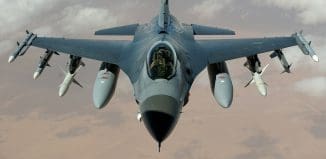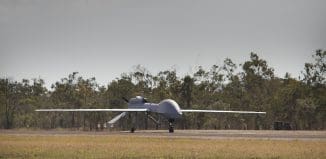Warfighters to Benefit from Wireless Communication Upgrade

This post is also available in:  עברית (Hebrew)
עברית (Hebrew)
A new communication system to be carried by warfighters, developed by the US Ministry of Defense, expands wireless communication into undersea, underground, and other settings.
Wireless communication is a complex utilization of physics and engineering. Radio signals travel from a transmitter to a receiver in the form of electric and magnetic fields woven into electromagnetic waves.
These physics impose strict limits, including ones that frustrate the US Department of Defense. It’s crucial that radio frequency signals hit veritable and literal walls when they encounter materials like water, soil, and stone, which can block or otherwise ruin those radio signals.
With his newly announced Mechanically Based Antenna (AMEBA) effort, program manager Troy Olsson of the Microsystems Technology Office at the US Defense Advanced Research Projects Agency (DARPA) is betting on a little-exploited aspect of electromagnetic physics that could expand wireless communication and data transfer into undersea, underground, and other settings where such capabilities essentially have been absent.
According to DARPA’s website, the basis for these potential new abilities are ultra-low-frequency (ULF) electromagnetic waves, ones between hundreds of hertz and 3 kilohertz (KHz), which can penetrate some distance into matters like water, soil, rock, metal, and building materials. A nearby band of very-low-frequency (VLF) signals (3 KHz to 30 KHz) opens additional communications possibilities because for these wavelengths the atmospheric corridor between the Earth’s surface and the ionosphere — the highest and electric-charge-rich portion of the upper atmosphere — behaves like a radio waveguide in which the signals can propagate halfway around the planet.
With the program, Olsson aims to develop entirely new types of VLF and ULF transmitters that are sufficiently small, light, and power-efficient to be carried by individual warfighters, whether they are on land, in the water, or underground. Rather than relying on electronic circuits and power amplifiers to create oscillating electric currents that, when driven into antennas, initiate radio signals, the new low-frequency VLF and ULF antennas sought in the AMEBA program would generate the signals by mechanically moving materials harboring strong electric or magnetic fields.
To open up practical new capabilities in national security contexts, however, the challenges include packing more powerful magnetic and electric fields into smaller volumes with smaller power requirements than has ever been achieved before for a ULF or VLF transmitter. That will require innovations in chemistry and materials (new magnets and electrets), design (shapes and packing geometries of these materials), and mechanical engineering (means of mechanically moving the magnets and electrets to generate the RF signals).
“Mobile low-frequency communication has been such a hard technological problem, especially for long-distance linkages, that we have seen little progress in many years,” said Olsson. “With AMEBA, we expect to change that. And if we do catalyze the innovations we have in mind, we should be able to give our warfighters extremely valuable mission-expanding channels of communications that no one has had before.”
DARPA has scheduled a Proposers Day on January 6, 2017, to fully lay out the vision, technology goals, and R&D challenges of the AMEBA program and to answer questions from potential proposers.




























